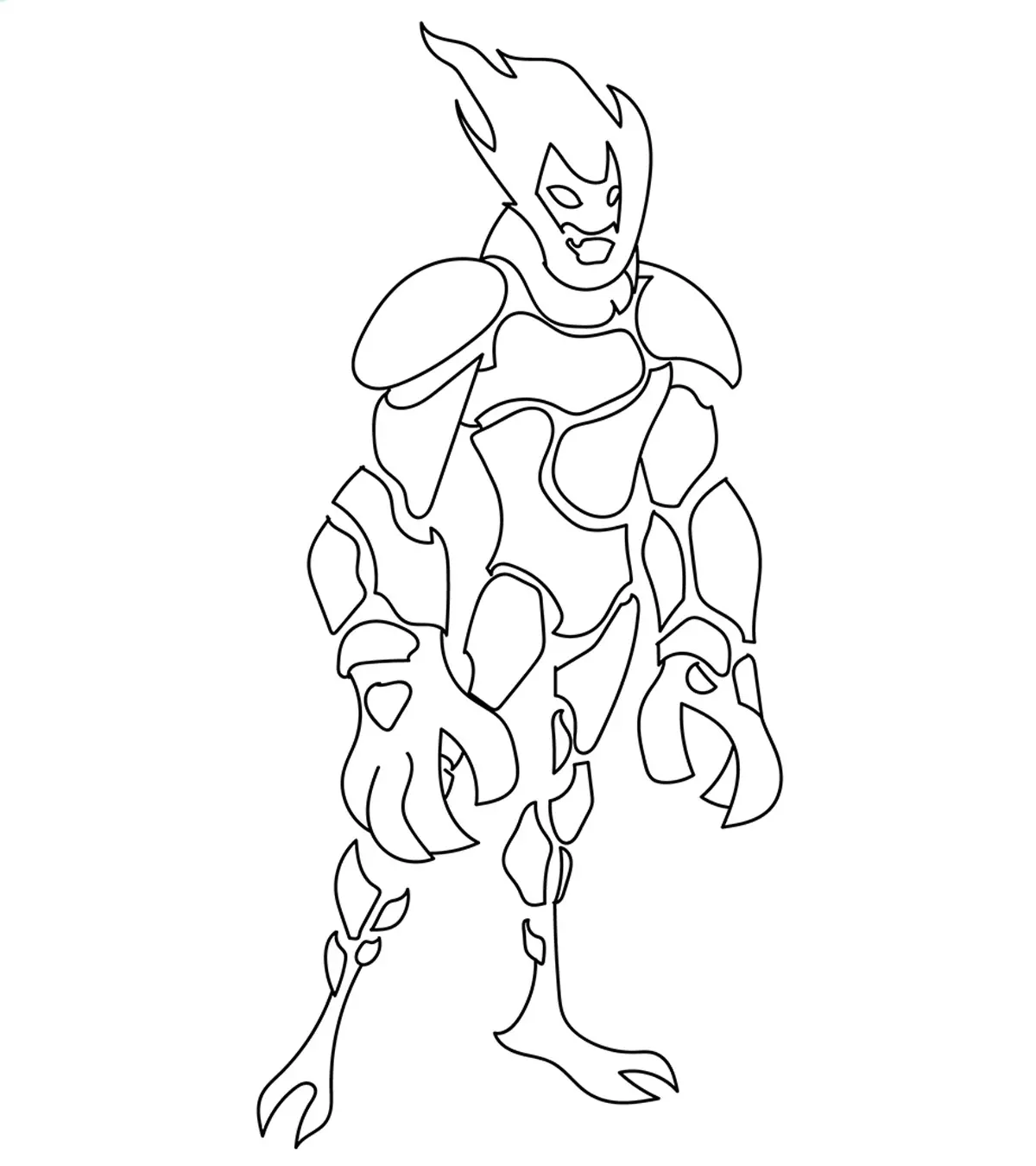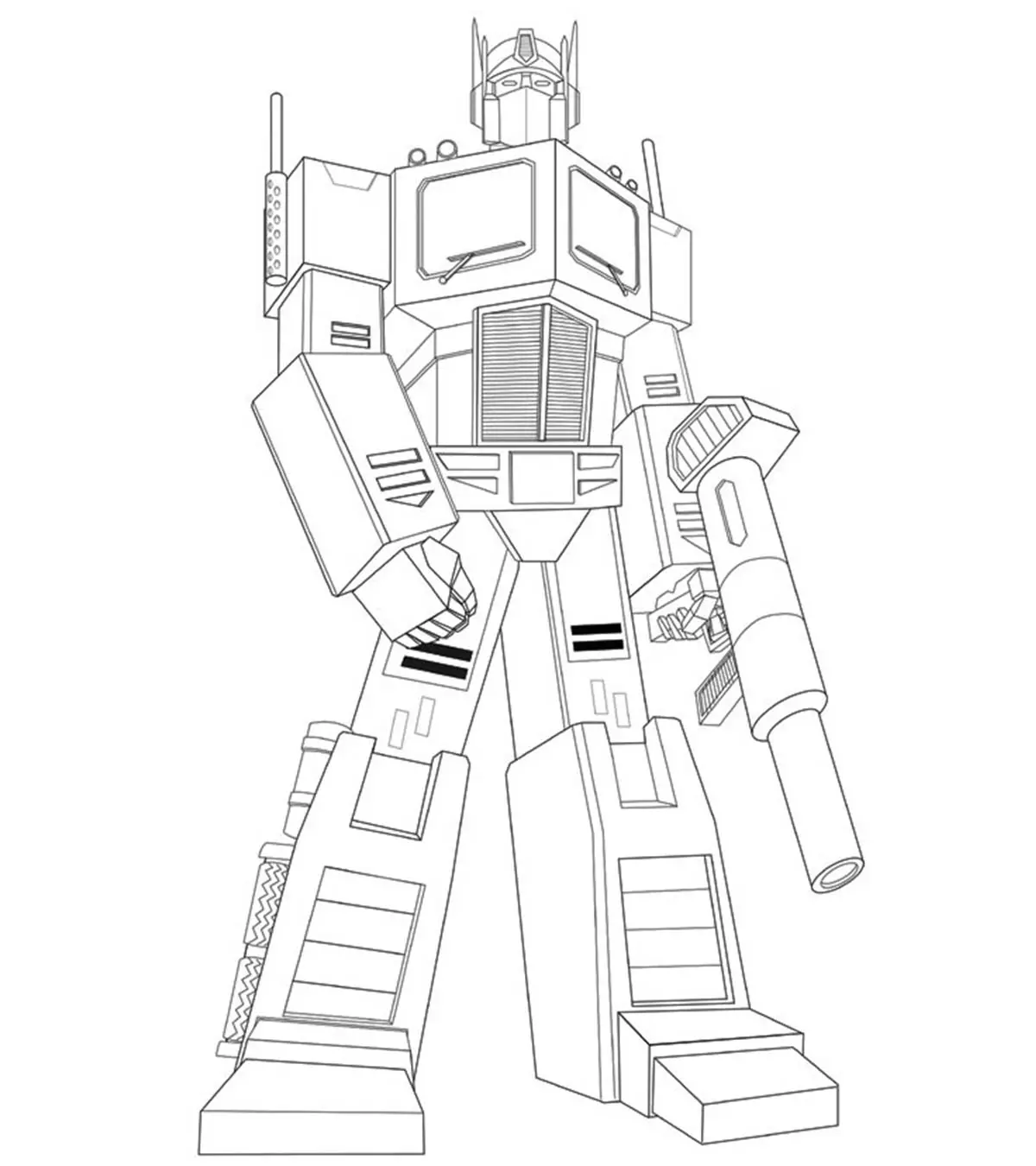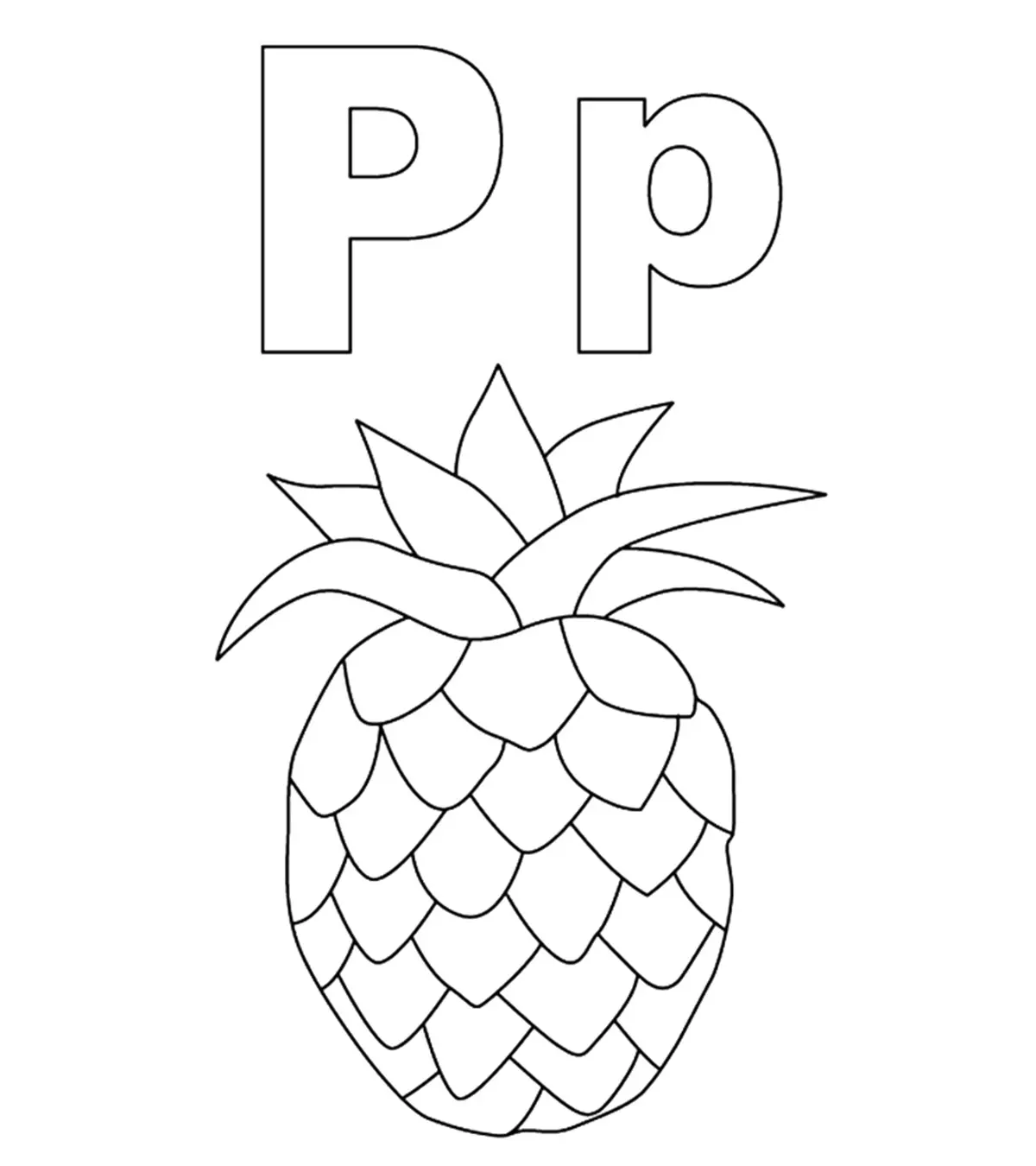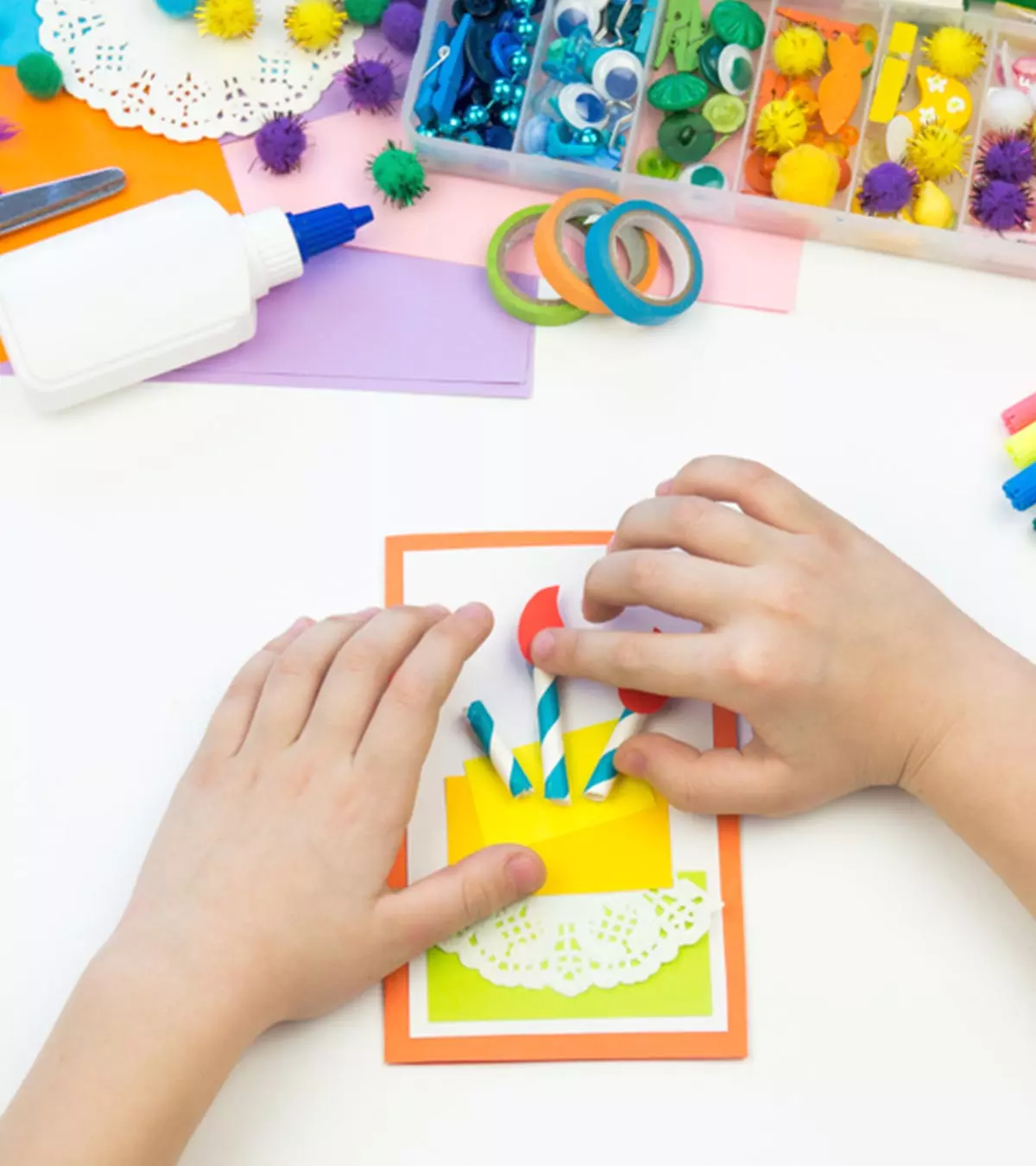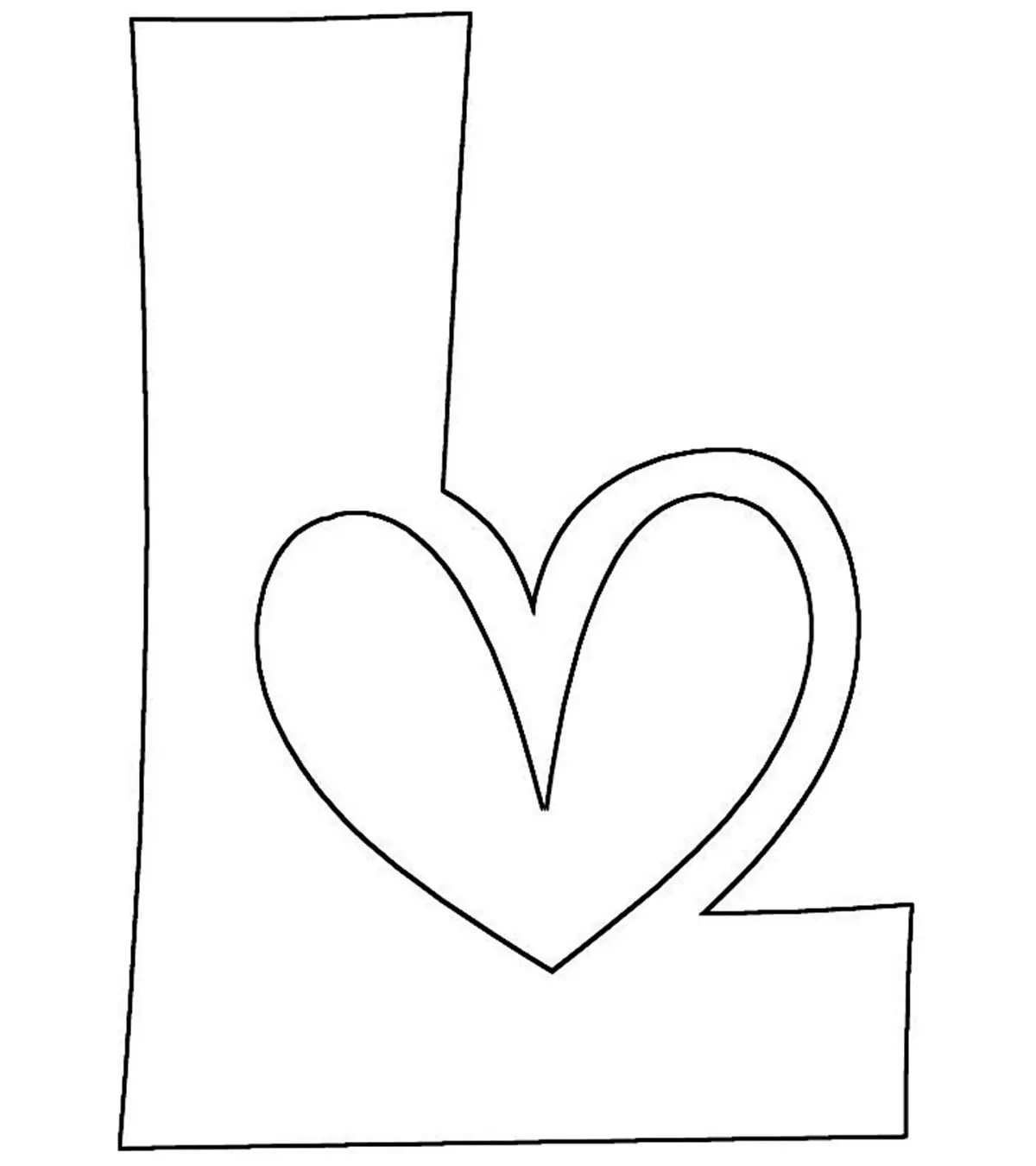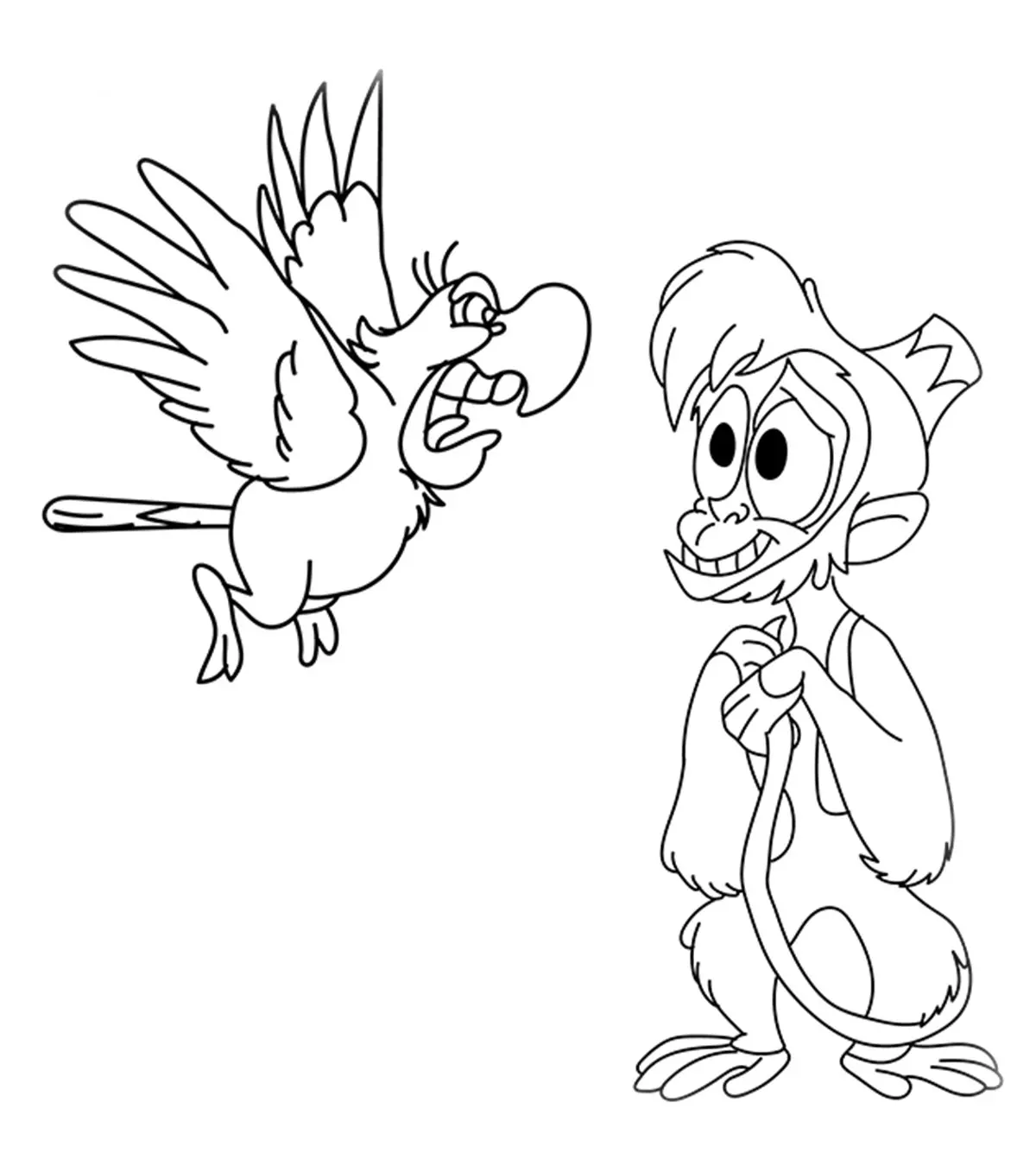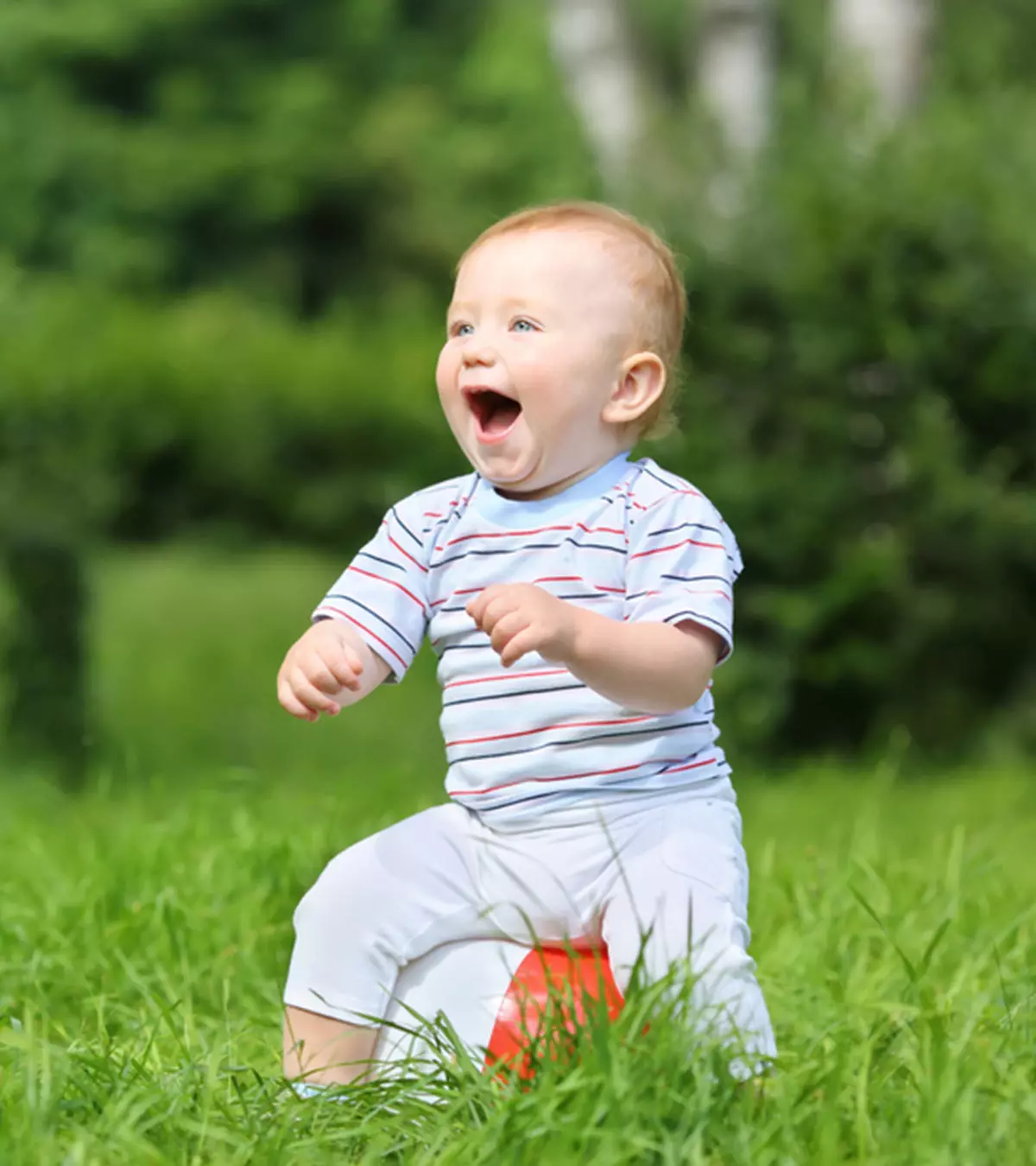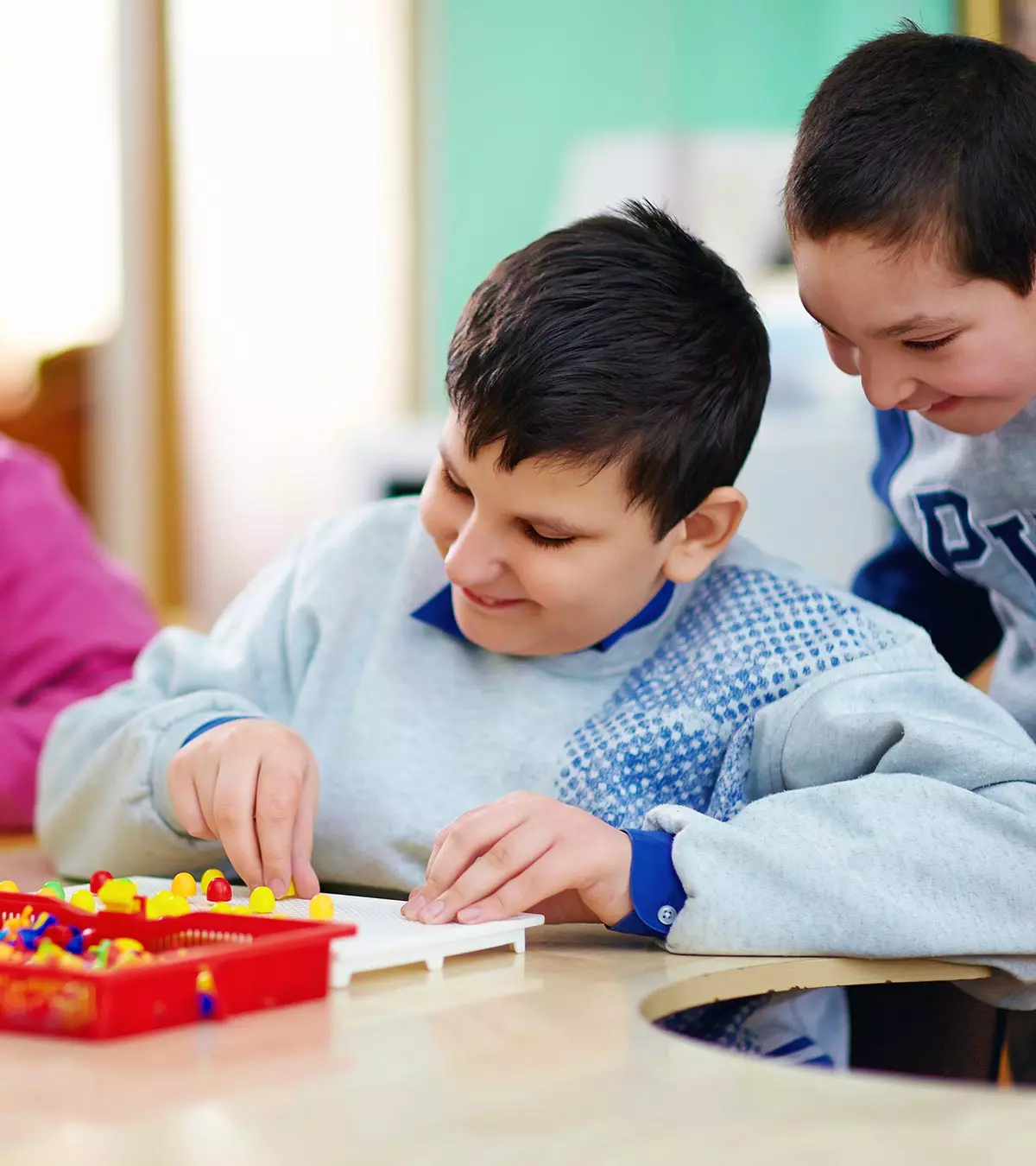
Image: ShutterStock
These innovative activities will keep children involved and enhance their learning. If you’re raising a child diagnosed with autism, you know the struggles that come with it. However, both you and your child are brave enough to face it and find ways to achieve things in life, and for that, kudos to you. In this post, we have listed several activities for children with autism so that you can involve them in fun and cool playtime moments with you or other kids. This guide provides a comprehensive list of activities for autistic kids, aiming to foster engagement and learning.

Key Pointers
- Children with ASD may exhibit varying levels of learning and problem-solving abilities.
- Engaging them in games and activities could aid in their overall development.
- Enhance your child’s sensory stimulation through ice painting, crafting a shredded flower bouquet, or rolling along.
- Overcoming an obstacle course or indulging in water therapy can bring joy and fulfillment to your child.
What Is Autism Spectrum Disorder?
Autism spectrum disorder (ASD) is a neurobiological health conditioniRefers to a condition caused by differences in the structure or function of the brain. In the case of ASD, it impacts normal brain development. These brain differences can change how someone grows and learns, as it can make some things harder, but also make them really good at other things. that affects normal brain development. Autism spectrum disorder in children impacts communication skills and also leads to several behavioral and social challenges (1).
The ‘spectrum’ in ASD means the ASD symptoms and the severity of these symptoms may differ for each person. Some people with ASD may have exceptional learning and problem-solving abilities while others may struggle with simple learning tasks. (2)
You have to involve children with autism in activities to bridge the gap between them and their surrounding environment. Below are a few indoor and outdoor games and activities you can teach your toddler and younger kids.
Fun Indoor Activities For Children With Autism
These autism games and activities can improve social skills as they help strengthen the bond between your child and those around her.
Renee, grandmother of Marcus, a child with autism, shares how playing with Marcus has helped him. In a learning session with Jenny, a speech-language pathologist, Renne says, “He likes playing by himself, and whenever you would sit down with him, he would kind of move away, and he is getting very, very frustrated not being able to communicate.
“We think it has to be something so difficult, and we have to have all this education about autism to work with them. Actually, I’ve learned here with Jenny that it’s just the little simple things that you do and simplify the way you think about playing with them that help them the most (i).”
Many children with autism have unique sensory needsi , and it’s essential to tailor activities to suit these preferences, whether they prefer tactile, auditory, or visual stimuli. So, you can create fun-filled and engaging activities with a little effort from your side to aid in the development of a child with autism:
1. Create a shredded flower bouquet
This creative art therapy activity involves the ripping and shredding of paper to create a beautiful composition to use as a decorative element. This activity targets sensory play for children with autism who will love the sensory touch of handling paper and playing with shapes and colors. A study published in the Journal of Autism and Developmental Disorders found that creative arts interventions help autism to express themselves and develop their skills. The research states, ”Creative arts interventions benefited children with ASD in two OTPF–4 areas (process and social interaction) pertaining to the Performance Skills domain and one OTPF–4 area (body functions) pertaining to the Client Factors domain. We found similar effects for group and individual intervention sessions, and significant improvements required multiple sessions (5).”
You will need:
- Watercolor paper – 11” * 17”
- Flesh-colored paper
- Bright colored construction papers
- Green colored construction papers – various shades
- Glue stick
- Scissors
- Pencil
How to:
- Take a flesh-colored paper and let your little one trace his or her hand and arm. Cut out the trace.
- Keep watercolor paper in a portrait style.
- Now lay the paper hand across the bottom of the watercolor paper and see to it that the fingers touch the end of the paper.
- Cut the arm part and glue it on watercolor paper.
- Now help your child cut and tear long thin stems of green paper, then leaf shapes including small and big, flat and round, and thin and long.
- Place the stems in between the fingers, a few overlapping the thumb and most going beneath the fingers.
- Apply glue and then paste the stems at the bottom. Do not stick at the top.
- Now try to make the fingers hold the flowers by folding the fingers under and gluing them. Or you can even snip the fingers off to show the effect of bent fingers.
- Paste the leaves on and around the stems.
- Now cut or rip the colored paper into various petal shapes.
- Paste the petals. Try to overlap the stems and petals as much as possible so that the activity looks beautiful.
Customization: If your child is unable to cut the paper, allow them to rip it instead. You may also use pre-cut paper shapes for children with limited motor skills.
 Point to consider
Point to consider2. Underwater I spy alphabet bottle
Play therapyiPlay therapy is a way to help children by using play. Children can freely show how they feel, learn how to get along better with others and figure out how to solve problems, all while playing in a safe space. is effective in improving the social skills of children with autism. Here is a great alphabet bottle activity that will help to keep your little one focused and engaged. Your kids can recognize letters in a creative manner through the shiny floating sequins.
You will need:
- Plastic soda or empty water bottle
- Alphabet beads
- Sequins
- Glitter
- Water
- Corn syrup
- Highlighter
- Paper sheet
- Glue gun
How to:
- Take all the beads from A to Z and place them on the table. Ask your child to drop those letters one by one into the bottle.
- Your child can then drop sequins followed by glitter.
- Fill half of the bottle with water and another half with corn syrup. The role of corn syrup is to slow down the motion of the elements present inside, and it also prevents the glitter from sticking together.
- Apply glue to the lid so that the liquid inside will not spill.
- Shake the bottle and let your little one watch it. Ask her to find each letter and spot the letters in her name by shaking the bottle.
Customization: Incorporate elements your child likes working with. For instance, try themed sequins (e.g., dinosaurs or mermaids). Ask them to follow a checklist to mark the alphabet they find, which can promote a sense of accomplishment.
3. Paint with ice
Kids love swirling the paint on paper to create beautiful patterns. It helps them to improve their color observation and recognition skills. This is an interesting learning activity for toddlers and preschoolers with autism.
You will need:
Liquid egg tempera paint
Craft sticks
Ice cube tray
Plastic wrap
Paper
How to:
- Ask your child to pour paint into the ice tray and let herself analyze how many colors of cubes she wants.
- Have her keep a craft stick in the middle of each cube. If the sticks cannot stay standing, cover the tray with plastic wrap and then poke them through the wrap.
- Now let her keep the tray in the freezer until the color cubes form.
- Once the water freezes, ask your little one to choose one color cube.
- Holding the craft stick, she can swirl the paint cube on the paper. It leaves a beautiful stream of paint on the paper.
- Ask her to take different cubes and repeat the same.
- You can discuss things like how the paint transforms when kept in the freezer, what is happening when it is on paper, how it melts, and more.
Customization: If your child is not comfortable touching cold objects, allow them to wear gloves. Use their favorite colors or glitter that can make them excited to complete the activity. Provide them with stencils or outlines to guide them through the task.
4. Practice paint chip storytelling
Narrating a story is just like painting a picture where words are used instead of paint. A form of speech therapy, here, your little tot takes the help of paint chips and words to narrate a story. This helps to improve her narrative and imaginative abilities. Additionally, studies also have indicated that art therapy can help children with autism develop their fine motor skills and enhance their ability to carry out daily activities (6).
You will need:
- Color sample cards that have interesting names
- Pen and paper
- Glue
- Dictionary
How to:
- Let your kid pick five color sample cards with interesting names from which she can build a story. To make the story more interesting, you can ask her to pick random cards.
- If she is not aware of the words, let her check for the meaning in a dictionary.
- Now, she should think about how to link those five names to create a story.
- For instance, if she has the names Annie, Skating Pond, Cherry Lipstick, Pearl, and Hat, she has to think of a story that has all these names. Each word should be present in one paragraph. The paragraphs should link together as a story.
- Now ask her to stick the color sample words next to each paragraph. Add color to the pages.
While your little one reads aloud the story, you can understand her creative skills, suggest new words, point out the language and discuss it so as to improve her creative skills.
Customization: Incorporate words your child is familiar with to make the activity more engaging. Start with a few words and or allow them to narrate the story verbally without writing.
 Quick tip
Quick tip5. Making shapes
These are beautiful matching learning activities for children with autism to introduce the concept of puzzles. A craft stick contains only a half shape, and you need to find the other half and place them side by side to complete the shape. This will focus on your child’s fine motor skills.
You will need:
- 20 craft sticks
- Markers of different colors
How to:
- Place two craft sticks next to each other. Ask your child to draw a shape such that when you split those two sticks, the shape is equally present on the two.
- Let your little one create as many stick pairs as possible.
- Now ask her to mix all the sticks.
- Your child can find the sticks and join them to create the correct shapes.
Customization: Let your kid take up the shapes of a square, circle, triangle, and whatever is easy. Help your little one understand the concept of symmetry so that she draws symmetric shapes.
6. Sculpt clay snowflakes

You can have your child make sparkling snowflakes and thus experience the winter from your home. Sculpting clay is an amazing way to boost your little one’s motor skills and improve the sensory experience of pulling, kneading and squishing.
You will need:
- Air-dry white clay
- Glitter in opal and silver shades
- Clay molding tools like craft sticks, pencil erasers, and a spoon
- Egg tempera paint
- Thin paint brush
How to:
- Help your kid prepare the clay to create sculptures. Let them start pulling and kneading it. Once it turns soft, add glitter and tell her to knead again.
- Once that is mixed properly, help her mold the clay into snowflakes. Encourage her to design a variety of shapes by using modeling tools as well.
- Let her add color by using tempera paint. Leave it for a while to dry.
Teach your kid about the symmetry of hexagons through this activity.
Customizations: You may use picture guides or demonstrations to support better comprehension.
7. Make number rubbings
Children love crayons, and you can put this art by introducing them to rubbings. It helps to improve eye-hand coordination and works the small muscles of the hands.
You will need:
- Paper
- Black color marker
- Blank paper – 10 pieces with one number on each
- Objects with different textures – 10, which can be leaves, coins, sandpaper, etc.
- Pencil
- Safety scissors
- Lined paper
- Crayons
How to:
- Draw one to ten numbers on blank papers, one number on each sheet. Draw blocked, big, and outlined numbers for easy coloring.
- Help your child make a design by placing a texture below the paper and rubbing a crayon on it.
- Sit with your child and explain to her to do textures corresponding with the number page. For instance, if it is page 2, ask her to draw two different textures and make a design of it.
It is a great fun activity for kids with autism that teaches math. It helps kids connect numbers with objects to represent the number, thus improving their cognitive development.
Customization: You may use highly textured materials like corrugated cardboard or sandpaper, which will help enhance tactile feedback. You may also provide thicker crayons or crayon holders for easier grip and control.
8. Finding toys
Here is another activity that helps improve your child’s sensory skills by touching and feeling various things.
- Take a large plastic tub and fill it with beans or beads.
- Hide as many toys as you can inside the box.
- Now ask your little one to put her hand into the box and take out the toy by feeling each one.
Customization: You may also use softer and smoother fillers like pom-poms or silk scarves instead of beans or beads for children with tactile sensitivities. Also, consider using toys that make sounds or have distinctive textures to further add to the sensory experience.
9. Finger painting

It is a bit messy but helps your child learn much about colors. It makes your little one feel different textures by touch and will help with emotional regulation.
- Place tiny blobs of paint of various colors on paper. Then ask your kid to mix those paints using her fingers.
- Create words, numbers, shapes and various other patterns in the paint and keep a white paper on the top to create a stamp of finger painting.
Customization: You may include textured paints like glitter or foam paint to make the experience more stimulating. Also, provide larger sheets of paper and thicker paint to allow broader strokes and easier manipulation.
10. Song time
If your child with autism is unable to speak, she can try humming, or playing instruments like keyboards, piano, or drums. Music therapy is the way forward in such scenarios. Try singing a song and ask her to hum or create a new tone with any instrument. It will improve her sensory stimulationiShort for self-stimulatory behavior, ‘stims’ are repetitive actions or movements (e.g., hand-flapping, clapping, rocking). Individuals with autism sometimes do these things to help them feel calm or react to what is happening around them. It is short for self-stimulatory behavior. .
Customization: Keep a variety of instruments so your child gets a wide range of options to choose from. You may also incorporate dance or clapping to the rhythm to engage both auditory and physical senses.
11. Grounding technique
Helping children with autism manage anxiety often involves incorporating grounding techniques that cater to their unique sensory preferences and communication styles. The grounding technique is the use of the senses to regain control of the body in moments of anxiety. In this technique, focus on the 5-4-3-2-1 rule, which implies five things to look at, four things to touch, three things to hear, two things to smell, and one thing to taste. As this technique uses all the senses, it helps calm anxious thoughts and connect to the present moment (3).
Customization: You may use textured objects for the ‘touch’ component, like a soft blanket or a stress ball. You may make use of flashcards or gestures to help them identify what they see, touch, hear, smell, and taste.
No matter what activities for kids with autism you have in mind, the primary challenge lies in choosing the right activity and engaging them in it. Encourage his or her performance in every activity as these autism activities would help your kid connect and communicate with others in a better way!
Fun Games For Child With Autism
Children with autism go through various difficulties every day. They have difficulty understanding human relationships and intimacy. You can take them out, soak them in the sun, and notice a significant change in their behavior. Try the following outdoor and indoor games for children with autism of all ages.
Outdoor Games For Children With Autism
Outdoor play enables children with autism to connect with nature and explore nature in a way that can support their sensory and social needs.
12. Obstacle course

Outdoors provide significant obstacle courses. You can make your little one run around a bush, jump over a stick, down the slide and hug a tree. You do not require any equipment, and it will greatly enhance your kid’s obstacle course options. and strengthen his gross motor skills. Be as creative as you can.
Customization: For children with mobility issues, create a simpler course with fewer physical demands. For instance, you may have them follow a path with taped arrows or stepping over low obstacles.
13. Hide N’ Seek
This game can never turn old. People love playing it indoors, but outdoor playing is great. Children giggle and laugh when they see someone hiding behind a tree. You can integrate counting, visual perception and turn-taking into the game.
Customization: You may use their favorite toys or characters as ‘hiders’ instead of people to make the game more engaging. Opt for a quiet and low-stimulation area for sensitive children for a calming effect.
14. Head to the playground
Who will not love a playground? It is a perfect area for children to involve in physical activity to improve their motor skills, balance, confidence, social skills, and vestibular orientation. There is no need for panic or hover for their safety. Just stay close in reach and encourage them to go around different slides and swings.
Customization: Let your child choose their favorite equipment, such as swings or slides. For children who are not comfortable with crowded places, opt for a time when there is less crowd.
15. Water therapy
Wait for the rains to arrive and then you can send them outside. You should not bother whether they are with raincoats or not. Just let them get soaked or hand over an umbrella. Give them a broom to slosh away the water and buckets to collect it. The rains will offer a sensory integrationiThe process by which our brain interprets various sensory information, including touch, sound, sight, smell, and taste. episode.
Customization: You may give them cups and sponges to play in the rain just for some added fun. But if your child is not comfortable getting wet, they can use rain boots and an umbrella only to get accustomed to the experience first.
16. Nature scavenger hunt
To create a nature scavenger hunt, make a checklist featuring visual elements like leaves, flowers, rocks, and bugs alongside sensory experiences such as different textures and sounds. Use clear, simple instructions and incorporate movement activities like jumping over puddles or walking along tree lines. Allow for flexible timing and include a reward system for motivation while ensuring a familiar and safe environment. Optional activities like a nature journal or photo scavenger hunt can enhance visual-motor engagement and social coordination skills and encourage their sense of independence.
Customization: Let your child choose the items on the checklist such as a favorite flower or color. Including calming elements like listening to birds or feeling soft moss can promote additional sensory integration.
17. Rolling along

Bicycles, skateboards, and scooters encourage balance, linear acceleration and motor planning, which are all essential for sensory processingiSensory processing is how an individual’s brain understands and reacts to what they see, hear, smell, taste, and touch. Activities that target sensory processing help children engage their senses, improving focus, coordination, and adaptability. . Make sure they wear pads and helmets all the time. Teach them to pedal the bike by lowering their seat for their feet to touch the ground. Once they learn to walk and push, you can ask them to raise their seat. Make it a group activity by calling your child’s friends to join in on the fun. Group activities will help with socialization as well.
Caution:
- Do not leave your kids unattended.
- Give them proper shoes
- Apply sunscreen all over their exposed skin
Customization: Opt for adaptive equipment like balance bikes or training wheels for children who are still learning to perfect coordination. If your child is sensitive to movement, start with slow-paced rides first and then gradually increase the speed.
Indoor Games For Children With Autism
Following are some indoor games designed to suit the unique needs of children with autism. These games can foster cognitive development, social interaction, and sensory integration in a comfortable setting.
18. Colored beans
You will need:
- Lima beans or pinto beans
- Tupperware or Glad ware container/bag
- Food color
- Paper towel
How to:
- Ask your child to take a cup of beans into a glad ware container or a bag. Now add 15 drops of any food color you wish.
- Now close the lid or cover the bag and shake for about 10 to 15 seconds until you find all the beans are colored.
- Spread them evenly on a paper towel and leave them for drying.
- Likewise, you can prepare as many colored beans as your child wants. These colored beans will last for several months when stored in an airtight container.
- Your kid will have fun moving and running their fingers through the beans.
Customization: If your child has trouble using their hands or does not like how things feel, try giving them bigger beans to play with, or let them wear gloves.
19. Rainbow ice excavation
You will need:
- A few bits and pieces in different colors or rainbow colors
- Large container or vase
- Water
How to:
- Ask your child to gather various bits and pieces
- Take a large container, probably a tall one, and measure its capacity.
- Divide six layers, add water up to one layer, and then place red color bits and pieces. Place it in the freezer for some time. Take it out and add a second layer of water. Now add orange color bits. Freeze for some more time. Repeat this for six layers.
- Once everything is frozen, remove the ice tower by running water over the container and keep it upside down.
- You will get an ice tower with which your little one can have fun.
Customization: If your child does not like cold things, you can use warm water or a hairdryer to help melt whatever you’re working with.
20. Balloon paint stamping
You will need:
- Balloon
- Paint of any color
- Paper
- Googly eyes
- Button
How to:
- Blow up a balloon and give it to your kid. Ask her to dip it in the paint.
- Now let her stamp in the center of your paper to form a circle.
- Dip your finger into the paint and ask her to stamp on either side of the circle for creating ears.
- Glue in googly eyes on the paint.
- Glue the button nose and allow it for drying.
Customization: Let your child pick out different sizes of balloons or make shapes they like, like animals or cartoon characters. If they do not like touching paint, they can wear gloves. You can also use scented paints to make it more fun for them.
Illustration: Interesting Games and Activities For A Child With Autism

Image: Stable Diffusion/MomJunction Design Team
Frequently Asked Questions
1. Is gymnastics good for a child with autism?
Engaging in gymnastics can provide children with autistic spectrum disorders an enriching environment that may help them develop their social skills and improve their problem-solving abilities. Each type of activity under gymnastics provides a unique opportunity for them to learn and grow.
2. What stims a child with autism?
There could be many factors that might stimulate a child with autism. They could be stimulated while adapting to a new environment or when they are nervous. However, not all stimulants have a negative effect. An autistic child could be clapping every time their favorite music plays. Hence, it is crucial to identify the trigger while trying to manage the stimulation in an autistic child (4).
3. What can a child with autism play with?
Play therapy may encourage and motivate an autistic child to express themselves. A child with autism could seek comfort in toys that are calming. Sensory toysiCertain toys are designed to stimulate one or more senses. For example, a fidget spinner boosts tactile stimulation, while a slime encourages touch and visual engagement. such as fidget spinners, stuffed toys, or slimes could keep them engaged. However, make sure to purchase toys that are appropriate for their age.
4. How to calm a child with autism?
Empathy is a core skill for a parent or a guardian who looks after a child with autism. First, make them feel safe and let them know you’re there for them. Give them their favorite toys and talk soothingly. Once the child has calmed down, you may try to teach them relaxation techniques for future purposes. Peer support and family involvement are key factors in helping a child with autism.
5. What activities should I avoid if my child has autism?
Mindfulness about your child’s triggers is important. Try to avoid the activities with which your child is uncomfortable. Check if they’ve created an interest in the activity after a few days. If they are still uncomfortable, you may speak to your health professional and seek advice on curating interest in the activity.
6. What activities are best for sensory processing?
Sensory processing requires activities that require children to use all their senses. Activities like finding toys, nature exploration, clay play, shredded flower bouquets, obstacle course, rainbow ice excavation, and water therapy encourage sensory processing.
7. How do I motivate my child to participate?
To encourage your child to participate in the activities, create a comfortable environment by reducing distractions, such as turning off the TV and putting away extra toys. Select interesting activities related to their preferences and break tasks into smaller steps using visual supports or checklists. Employ positive reinforcement to praise appropriate behavior or new skills and use timers to signal transitions between activities. Introduce new tasks in a secure setting to build familiarity before applying them in more challenging contexts. You may also consider working with an ABA professionaliAn ABA professional is a therapist trained in a method called Applied Behavior Analysis. This method is a scientific way of understanding why people do what they do and developing specially tailored interventions to improve specific skills and reduce challenges in individuals with ASD. to identify motivating factors and develop a tailored progress plan.
Taking care of a child with autism, especially if you’re attempting to teach them, can be a difficult aspect of your daily routine as a parent. However, all indoor and outdoor activities for children with autism described above will help them learn while having fun. These activities also provide avenues to develop their social skills by allowing them to interact with other children and adults. This will encourage self-expression which will lead to an improvement in self-esteem. Remember to get your child involved in these activities and make sure you also join the fun with them.
Infographic: Handling Autism Meltdowns
Students with autism may feel overwhelmed and lose control over their emotions, exhibiting strong reactions at school. We share an infographic containing a few calming activities that may help teachers manage these meltdowns and offer children a safe environment. Illustration: Momjunction Design Team
Here are some delightful ways to help your child with autism through these 6 fun game ideas! Pull up your socks to play and bond with your child in a fun and meaningful way.
Personal Experience: Source
MomJunction articles include first-hand experiences to provide you with better insights through real-life narratives. Here are the sources of personal accounts referenced in this article.
i. “Playing with toys” real look autism episode 5.https://www.youtube.com/watch?v=V-c50HNnPg0
References
- Autism Spectrum Disorder, Cleveland Clinic.
https://my.clevelandclinic.org/health/articles/autism - Learning and development in autistic children and teenagers.
https://raisingchildren.net.au/autism/learning-about-autism/about-autism/learning-strengths-asd - Sensory Grounding: A coping technique for children with anxiety.
https://www.manningchildrens.org/news-blog/2025/july/sensory-grounding-a-coping-technique-for-childre/ - Reducing self-stimulatory behaviors in individuals with autism.
https://www.mayinstitute.org/news/acl/asd-and-dd-adult-focused/reducing-self-stimulatory-behaviors-in-individuals-with-autism/ - Allison Bernier et al.; (2025); Art Interventions for Children With Autism Spectrum Disorder: A Scoping Review.
https://pmc.ncbi.nlm.nih.gov/articles/PMC9575654 - Art Therapy as a tool to Enhance Social Skills in Children Autism Spectrum Disorder: A LA Literature Review.
https://digitalcommons.lesley.edu/cgi/viewcontent.cgi?article=1895&context=expressive_theses&utm - Elysa Jill Marco et al.; (2011); Sensory Processing in Autism: A Review of Neurophysiologic Findings.
https://pmc.ncbi.nlm.nih.gov/articles/PMC3086654/
Community Experiences
Join the conversation and become a part of our nurturing community! Share your stories, experiences, and insights to connect with fellow parents.
Read full bio of Catherine Mok
Read full bio of Manjiri Kochrekar
Read full bio of Harshita Makvana
Read full bio of Apoorva K








